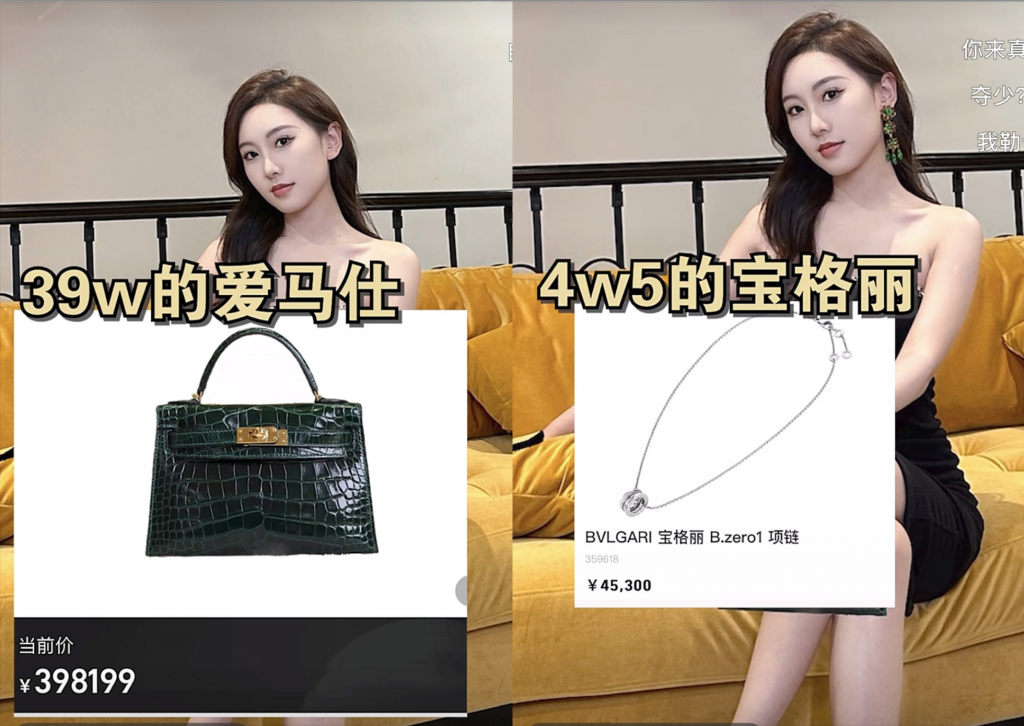In the ever-evolving landscape of fashion consumption, China is witnessing a unique digital phenomenon that encapsulates the spirit of innovation and economic consciousness among its younger generations. This trend, marrying technology with fashion aspirations, is reshaping the concept of luxury in the digital age.
The Virtual bling concept in China, explanation
China’s latest fashion trend is revolutionizing the way luxury is perceived and consumed, without the need for deep pockets. Dubbed “virtual bling” or “dianzi dapai” in local dialect, this trend involves savvy photo editing, allowing users to digitally accessorize their photos with high-end luxury items like Dior handbags or Cartier jewelry instead of purchasing these expensive items. source JIngdaily

The importance of Face on Chinese Social Media
As reported by the New Retail Business Review, this online craze has particularly resonated with the mainland’s youth, especially those earning around 5,000 RMB ($685.84) per month. Hashtags related to the trend, such as “young people fall in love with ‘digital high-end brands’” and “would you Photoshop luxury brands on photos?”, have exploded, garnering hundreds of thousands of views. This novel and somewhat ironic trend reflects a significant shift in China’s approach to luxury consumption, indicating a deeper commentary on societal values and economic realities.

Enjoy a rich life
The roots of “virtual bling” can be traced back to a rising anti-consumerist sentiment on social platforms like Weibo and Xiaohongshu. It emerged as a response to the public ridicule faced by individuals sporting counterfeit luxury goods. In a defiant stand against societal pressure, netizens started superimposing luxury items, ranging from designer bags to private jets, onto their images, coining the slogan “use big electronic brands to enjoy a rich life.”
LIfestyle exposed on Social Media
The practice of using images directly from luxury brands’ official websites lends these virtual items a sense of authenticity, as one enthusiast puts it, “how could they be fakes? They were all taken directly from the official website.” This trend is part of a broader movement among China’s youth, who are increasingly finding creative ways to express themselves and manage economic challenges, much like the concepts of “lying flat” and “exquisite poverty.”
Marketing Implications and Tips in China:
- Embrace Digital Creativity: Brands should recognize and engage with this digital trend, perhaps by offering official high-quality images of their products for virtual use. This approach acknowledges the trend while maintaining brand integrity.
- Leverage User-Generated Content: Encourage consumers to share their digitally enhanced images on little Red book. This strategy not only embraces consumer creativity but also increases brand visibility in an authentic and cost-effective way.
- Incorporate AR Technology: Invest in augmented reality (AR) features that allow consumers to virtually try on products. This tech-forward approach aligns with the digital nature of the trend and enhances the user experience.
- Focus on Accessibility and Inclusivity: Use this trend as an opportunity to promote more accessible product lines or services. It’s a chance to appeal to a broader audience while staying relevant to current digital behaviors.
- Narrative Marketing in China: Craft narratives around the trend that resonate with the anti-consumerist sentiment. This could involve storytelling that highlights brand heritage, craftsmanship, or the timeless value of products, aligning with the desire for authenticity and quality over quantity.
In conclusion, “virtual bling” is more than just a passing fad; it’s a cultural commentary and a potential marketing goldmine. Brands that adapt and engage with this trend thoughtfully can tap into a new paradigm of digital-first luxury consumption
Read more

